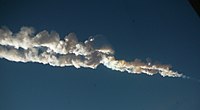
Photo from wikipedia
Cracked tooth syndrome is a commonly encountered disease in dentistry, which is often accompanied by dramatic painful responses from occlusion and temperature stimulation. Current clinical diagnostic trials include traditional methods… Click to show full abstract
Cracked tooth syndrome is a commonly encountered disease in dentistry, which is often accompanied by dramatic painful responses from occlusion and temperature stimulation. Current clinical diagnostic trials include traditional methods (such as occlusion test, probing, cold stimulation, etc.) and X-rays based medical imaging (periapical radiography (PR), cone-beam computed tomography (CBCT), etc.). However, these methods are strongly dependent on the experience of the clinicians, and some inconspicuous cracks are also extremely easy to be overlooked by visual observation, which will definitely affect the subsequent treatments. Inspired by the achievements of applying deep convolutional neural networks (CNNs) in crack detection in engineering, this article proposes an image-based crack detection method using a deep CNN classifier in combination with a sliding window algorithm. A CNN model is designed by modifying the size of the input layer and adding a fully connected layer with 2 units based on the ResNet50, and then, the proposed CNN is trained and validated with a self-prepared cracked tooth dataset including 20,000 images. By comparing validation accuracy under seven different learning rates, 10−5 is chosen as the best learning rate for the following testing process. The trained CNN is tested on 100 images with 1920 × 1080-pixel resolutions, which achieves an average accuracy of 90.39%. The results show that the proposed method can effectively detect cracks in images under various conditions (stained, overexplosion, images affected by other diseases). The proposed method in this article provides doctors with a more intelligent diagnostic solution, and it is not only suitable for optical photographs but also for automated diagnosis of other medical imaging images.
Journal Title: Applied Bionics and Biomechanics
Year Published: 2022
Link to full text (if available)
Share on Social Media: Sign Up to like & get
recommendations!